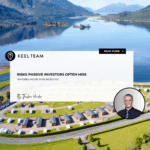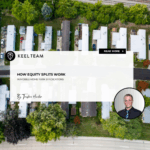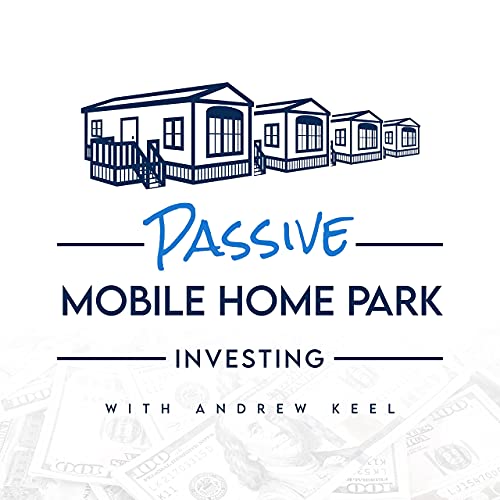Mobile Home Park Investing 101: How to Raise Capital from LPs
-
 Tristan Hunter - Investor Relations
Tristan Hunter - Investor Relations

Mobile home park investing is growing in popularity as a stable way to build wealth potential. The potential returns appeal to many, but raising capital often presents one of the biggest challenges. This guide lays out the foundations for raising capital for mobile home park investments, offering insights to help create a smoother experience.
Understanding Mobile Home Park Investing
Mobile home park investing involves purchasing and managing mobile home communities to generate income potential. Investors typically acquire land with tenant-owned or park-owned homes, collecting rental income and often increasing value through property improvements. It’s a real estate investment focused on affordable housing, requiring less hands-on involvement if you are pursuing the passive investing route and partnering with experienced operators.
Mobile home park investments often pool capital to acquire, improve, and operate mobile home communities, aiming to generate consistent cash flow and increase value. With its long-term potential, raising sufficient capital upfront becomes essential, whether through individual contributions, partnerships, or institutional funding.
Why Raising Capital Is Crucial in Mobile Home Park Investments
Raising capital allows you to acquire quality assets, make necessary improvements, and set the foundation for long-term return potential. Many investors are attracted to mobile home parks due to their historical resilience in economic downturns, low tenant turnover, and the growing need for affordable housing. However, financing these investments usually requires substantial capital, which can be challenging to gather independently. By tapping into outside funding, you can likely increase your purchasing power and diversify the risk across multiple investors.
Download our FREE eBook on the Top 20 things to know BEFORE investing in mobile home parks!
Step 1: Build a Solid Investment Thesis
To attract potential investors, start with a clear and compelling investment thesis. This should outline the unique advantages of mobile home park investing and the specific benefits of the opportunity you’re presenting. Here are some points to include:
- Affordable Housing Demand: Mobile home parks fulfill a need for affordable housing, which has grown in demand nationwide.
- Stable Cash Flow: Mobile home parks often experience lower turnover, as residents typically own their homes but lease the land, likely creating a reliable income stream.
- Value-Add Opportunities: Many mobile home parks offer opportunities to increase value through improvements or operational efficiencies.
These points can help investors understand why mobile home parks are a solid choice in passive investing.
Step 2: Network to Build Your Investor Pool
Networking is essential for raising capital. Consider attending real estate investment meetings, joining online groups, and reaching out to contacts who may be interested in passive income opportunities. Building a network of potential investors early on helps you establish credibility and increase your chances of raising the necessary funds.
- Real Estate Meetups: Join local or virtual real estate meetups to connect with like-minded individuals interested in mobile home park investing.
- Online Forums and Groups: Platforms like LinkedIn, BiggerPockets, and Facebook have groups where real estate investors discuss opportunities. Engaging in these communities can lead to connections with potential investors.
- Existing Investors: Don’t overlook friends, family, and business associates who might want to diversify their portfolios with mobile home park investments.
Networking helps you expand your investor base and gain trust, which can be essential in raising capital for mobile home park investing.
Step 3: Create a Business Plan and Financial Projections
After gauging interest, consider developing a detailed business plan outlining the specifics of the mobile home park investment. Include:
- Property Analysis: Describe the mobile home park, its location, demographic details, and current market trends.
- Capital Structure: Outline the capital required, expected returns, and how profits will be distributed among investors.
- Financial Projections: Present projected cash flows, estimated expenses, and potential appreciation. Show realistic scenarios and outline risks to manage investor expectations.
A comprehensive business plan builds professionalism and boosts investor confidence. Providing transparent, well-structured financial projections and any additional information—like rent comparisons or rent rolls—demonstrates a solid understanding of mobile home park investing intricacies.

Step 4: Present Investment Opportunities with Transparency
Transparency is key to building investor trust. Share both the advantages and potential risks of the mobile home park investment. Many investors appreciate honesty about potential downsides, as it reassures them that you’re not overselling the opportunity. Additionally, try to present information in an accessible, straightforward way so investors with varying levels of real estate knowledge can understand it.
Consider highlighting factors like:
- Market Risks: Discuss regional market trends that could impact the mobile home park industry.
- Operational Risks: Explain any operational risks, such as high vacancy rates or unexpected maintenance costs.
- Exit Strategies: Offer multiple exit strategies to provide investors with a clear understanding of the investment’s lifecycle.
By laying out the complete picture, you help investors make informed decisions, which can make them more likely to commit funds.
Step 5: Leverage Technology for Investor Management
Using technology to streamline communication with investors can be highly effective. Platforms like InvestNext can help you manage communications, distribute reports, and track investments. Investors appreciate the convenience of accessible updates and detailed information, and utilizing these tools can enhance transparency and professionalize your operation.
Consider providing:
- Regular Updates: Use investor portals to send quarterly updates on financial performance, occupancy rates, and project milestones.
- Document Repository: Give investors access to documents like property analysis, financials, legal agreements, bank statements, and P&Ls.
- Distributions: Many platforms allow you to automate distribution processes, making it easier for investors to receive payouts.
Investors who have a smooth experience are more likely to reinvest in future mobile home park deals, making technology a valuable asset in investor relations.
Step 6: Structure the Deal to Attract Investors
The structure of your mobile home park investment deal can influence how attractive it is to potential investors. Common structures include:
- Preferred Returns: Offering a preferred return provides investors with a set return rate before profits are distributed, helping reduce their risk.
- Equity Split: An equity split allows investors to share in the upside of the investment.
- Waterfall Structure: A waterfall structure can be used to incentivize certain benchmarks, such as higher returns or specific occupancy rates.
Your goal is to create a win-win structure that aligns with investors’ interests and makes your mobile home park investment appealing.

Step 7: Secure Legal Documentation and Compliance
Mobile home park syndications must comply with federal and state securities regulations. It can prove essential to work with an experienced attorney to prepare the legal documents, including:
- Private Placement Memorandum (PPM): This document outlines the investment offering, risks, and disclosures for potential investors.
- Operating Agreement: Define the roles, responsibilities, and ownership structure for all parties involved.
- Subscription Agreement: This legally binds investors to the terms of the mobile home park investment.
Ensuring compliance can help you avoid potential legal issues and protect the interests of all stakeholders.
Step 8: Foster Long-Term Relationships with Investors
Once the capital is raised, focus on fostering relationships with your investors. By maintaining regular communication, providing detailed updates, and meeting projected timelines, you can build trust and credibility, increasing the likelihood of reinvestment in future mobile home park deals.
Conclusion
Raising capital for mobile home park investing involves a structured approach, strong relationships, and clear transparency. Following these steps can set a strong foundation for a potentially successful mobile home park investment journey. Remember, raising capital relies on maintaining trust and credibility as much as finding investors. With the right network and approach, you can likely build a steady stream of funding for future mobile home park opportunities.
Are you looking for MORE information? Book a 1-on-1 consultation with Andrew Keel to discuss:
- A mobile home park deal review
- Due diligence questions
- How to raise capital from investors
- Mistakes to avoid, and more!
Disclaimer:
The information provided is for informational purposes only and is not investment advice or a guarantee of any kind. We do not guarantee profitability. Make investment decisions based on your own research and consult registered financial and legal professionals. We are not registered financial or legal professionals and do not provide personalized investment recommendations.

Tristan Hunter - Investor Relations
View The Previous or Next Post




